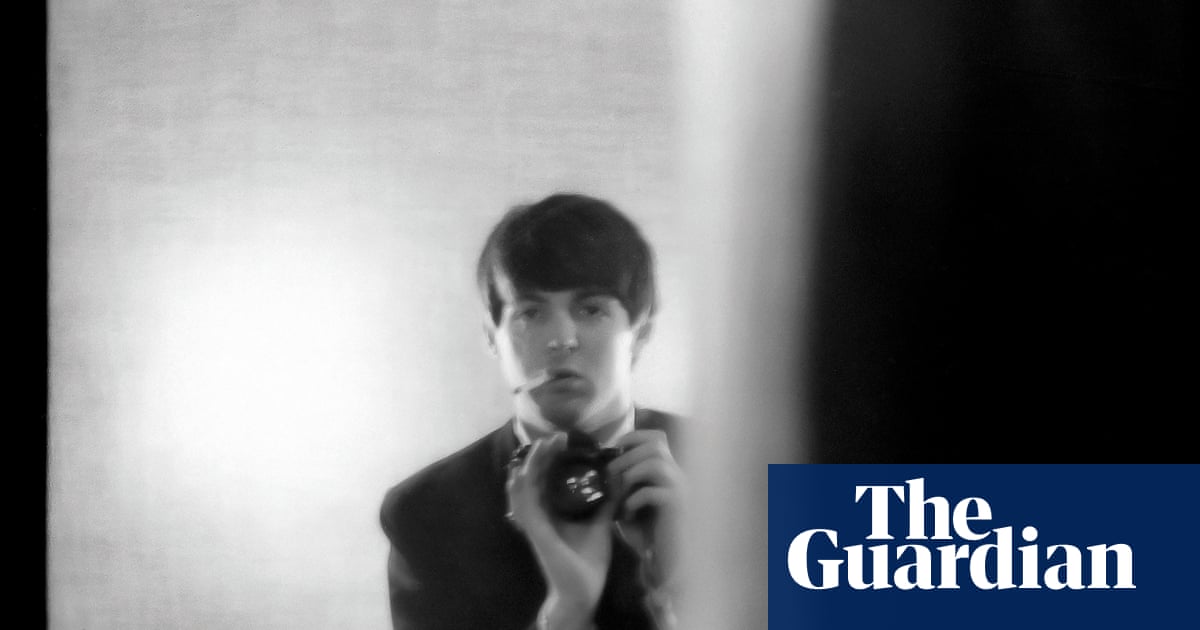
In the later years of his life, Lou Reed kept an office in Manhattan’s West Village and a storage space in New York City’s Chelsea district. The latter, says his former technical assistant Jason Stern, was “stacked almost floor to ceiling” with unlabelled cardboard boxes. “I had no idea what was in them. I never asked Lou.”
When Reed died in 2013, the question of what to do with it all loomed large for his wife, the artist, musician and film director Laurie Anderson. No, she sighs, Reed left no instructions regarding his archive. “Wouldn’t that be great! No, nothing. Zero. We didn’t really talk about it,” she says. She even balks at the notion of calling it an archive. “I wouldn’t say that because he kept things, he was aware of their value. He didn’t think about his stuff that way. He wasn’t curating at all. He really wasn’t that interested in his past. He just left it there. This stuff was not important to him.”
Clearly, something had to be done with the boxes he had left behind: whether the notoriously contrary Reed cared or not, they represented the annals of one of the most important figures in rock history. Anderson engaged Stern and Don Fleming (producer of Sonic Youth, Hole and Alice Cooper among others, frontman of cult New York bands BALL and Gumball and latterly involved with conserving the archive of folklorist Alan Lomax) to sort through them. Inevitably, they found a treasure trove: 600 hours of unreleased live and studio recordings, alongside tapes that suggested Reed had followed his old mentor Andy Warhol’s example and recorded everything that happened to him over the course of a day. “The way that Andy and [assistant] Brigid Polk would tape everything with a portable cassette deck, Lou would do the same,” says Fleming. “A lot of the tapes we found are exactly that: they’rejust Lou hailing a cab with Moe Tucker.”
But the most startling discovery wasn’t in the storage unit. Clearing the shelves behind Reed’s desk, Stern and Fleming found a package that they initially thought was a CD box set. On closer inspection, it turned out to be a reel-to-reel tape, sealed in a paper envelope dated May 1965 and addressed by Reed to himself, at his parents’ house in Freeport, Long Island.
When they opened it, they discovered a demo tape. Reed had sent it to himself as a cheap way of asserting authorship of its contents: in a fabulous minor detail, the package was notarised by someone called Harry Lichtiger, who research revealed to be a shonky local pharmacist, convicted of selling barbiturates without prescription. It contained recordings made by Reed and John Cale when Reed was still working as a songwriter for the budget label Pickwick Records. Among them were the earliest known versions of the Velvet Underground’s Heroin, I’m Waiting for the Man and Pale Blue Eyes, Wrap Your Troubles in Dreams – the song which the Velvet Underground played live and eventually appeared on Nico’s debut solo album Chelsea Girl – and a selection of previously unheard songs. It opens with Men of Good Fortune – not the song of the same name that Reed recorded on 1973’s Berlin, but a faux-traditional folk ballad, sung from a female viewpoint.
“That shocked me the most,” says Anderson, “because of the voice he chose to use, which is a little girl. We had a number of running voices – he could do hundreds of voices and he’d given names to all these imaginary people – and that little girl was one of them. So to hear her narrating was mind-blowing for me: wow, he was doing that as a kid, too?”
The contents of the tape are about to be released as an album, Words and Music, May 1965. There are other reasons to be startled by its contents, not least the fresh light it shines on one of the US’s most important songwriters. Fans know that Reed was obsessed with doo-wop and tough rhythm and blues – you can hear the influence of the former on one of the demo’s other unreleased tracks, Buzz Buzz Buzz, and the latter on another, Stockpile. Less expected is the sound of Reed as the Bob Dylan-influenced, harmonica-playing folkie, essaying Heroin and I’m Waiting for the Man as gentle, fingerpicked acoustic guitar pieces, and performing a rousing waltz-time number called Buttercup Song that feels like it was designed to get audiences bellowing lustily along at Greenwich Village open-mic nights (a handful of earlier home recordings included on the Words and Music album feature Reed covering Don’t Think Twice, It’s Alright and hootenanny perennial Michael, Row the Boat Ashore).
Indeed, it’s so obviously influenced by Dylan that you wonder how Reed bit his tongue a year later, when the Velvet Underground were embedded in Warhol’s Factory studio, a milieu where Dylan was colloquially referred to as “The Creep” and satirised in Warhol’s films More Milk, Yvette and The Bob Dylan Story. “Dylan is the answer for most of the things on there,” says Anderson. “His harmonica, the whine, the tone. Empathy and the underdog and voices that are not heard, not the voice of the heroic songwriter poet. We talked about Dylan now and then, and it was a complicated relationship. But Dylan made a big impression on him.”
Equally striking, is how different in tone the Velvet Underground songs here are to the versions the band later recorded. Heroin somehow manages to be gentler and more nihilistic; the word “don’t” is missing from the opening line: “I know just where I’m going.” Pale Blue Eyes is famed as the most beautiful of the songs Reed wrote about his college sweetheart, Shelley Albin, who had left him and married a “big wheel” on Syracuse university’s campus: the hushed tenderness of the version on the eponymous third Velvet Underground album rooted in the fact that Reed and Albin had subsequently resumed their affair behind her husband’s back. But the 1965 demo is markedly different, closer to the icy cruelty of the songs on Berlin: “I’d just as soon see you dead,” he sings. Weirdest of all, I’m Waiting for the Man is played for laughs. The Harlem pimp who demands: “Hey white boy, what you doin’ uptown?” is answered not by a sneering Reed but Cale affecting an exaggeratedly posh English accent: “Oh pardon me sir, nothing could be further from my mind,” he stammers, like Hugh Grant in a tight spot.
“I wasn’t surprised at all, it made perfect sense to me,” says Anderson of the song’s lighthearted tone. “I recognised Lou, that was him – he was hilarious, he was the funniest guy I’ve ever met.”
More prosaically, Fleming points out that “in the context of what they were up to at the time, it makes a lot of sense”. Reed and Cale were scratching together a meagre living from busking (“we made more money on the sidewalks than anywhere else,” Cale later remembered) and a comedy routine involving a flustered Englishman, even an Englishman flustered by the business of scoring heroin, had a touch of street theatre about it, useful in piquing the interest of passersby.
It was a world that was about to shift. Within months of the demo being recorded, Reed and Cale had formed the Velvet Underground, secured themselves a residency at Café Bizarre in Greenwich Village, and – fortuitously – met Warhol two nights before Café Bizarre fired them, thanks to what guitarist Sterling Morrison called the “outrage and bewilderment” caused by their music. Within a year, they were in the studio recording The Velvet Underground and Nico, and in the process, changing rock music forever.
Along the way, Cale lured Reed away from the folk music found on the demo tape: “I couldn’t give a shit about folk music, I hated Joan Baez and Dylan,” he later protested, although, in fairness, Cale sounds as if he’s having a high old time singing harmonies. Only one song faintly suggests what would happen next: sung by Cale, Wrap Your Troubles in Dreams is eight minutes long and driven not by Reed’s guitar, but a kind of drone, which sounds like the body of guitar being repeatedly struck with something, maybe a coin. “The last song on the tape,” says Stern, “and suddenly the bridge to the Velvet Underground feels a lot more solid, it starts to become more logical where this is going.”
In his later years at least, Reed kept the unopened package within easy reach: the sleeve notes of Words and Music suggest its proximity might have functioned as “a talisman of sorts, a reminder of his musical journey”, although Anderson isn’t sure about that. He must have known what was on it, but never proffered it when box sets or deluxe editions of the Velvet Underground’s work were compiled.
“I was in the office when the courtesy copy of the White Light/White Heat Super Deluxe edition came in,” says Stern, “and he wasn’t particularly pleased that this thing showed up in the mail. He was like: ‘What are these bonus discs? What is this stuff? Why are they doing it?’ Then he cranked the volume really loud, listened to the bonus disc of them playing live at the Gymnasium in New York in 1967 and was transported. But I had to remove the Velvet Underground from his iTunes, so it wouldn’t accidentally come on when he was listening to other things. He would hear his own voice and be like: ‘This isn’t me listening to music for fun.’”
Which begs the question of what Reed would have made of people listening to his nascent songs today. Anderson frowns. “He would have loved this tape if he had listened to it – I really can’t stand it when people say what a dead person would like. Really? How do you know that?” she says, for a moment sounding not unlike her late husband in withering mode. “My guess is that he would have been interested in this young guy who was so ambitious, and so much the same person as the old guy, you know?”
Words and Music, May 1965 is released on Light in the Attic on 16 September and physically on 21 October.












